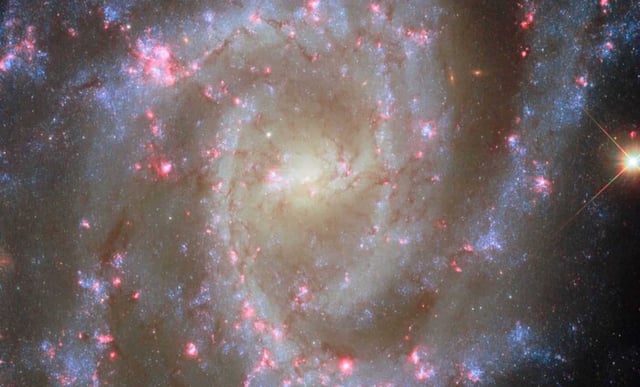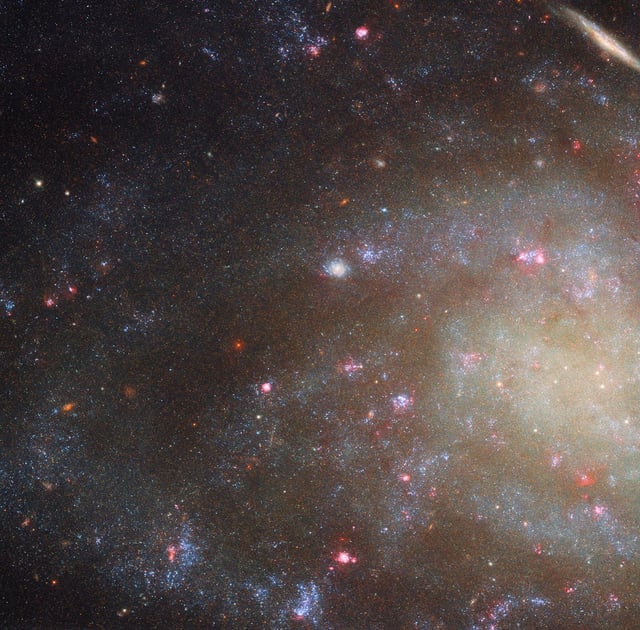Overview
- NASA and ESA released an updated Hubble image of NGC 2835 that adds H-alpha data to spotlight dozens of pink nebulae along its spiral arms.
- NGC 2835 sits about 35 million light-years away, spans roughly 65,000 light-years, and hosts a central black hole estimated at 3–10 million solar masses.
- H-alpha emission traces H II regions as well as signatures of supernova remnants and planetary nebulae, sharpening maps of recent star formation.
- A separate Hubble portrait of NGC 45 uses a broad UV-to–near-infrared survey of 50 nearby galaxies plus a focused H-alpha program to examine its star-forming regions.
- NGC 45 lies about 22 million light-years away and is classified as a low surface brightness galaxy, a category researchers estimate includes roughly 30%–60% of all galaxies.

